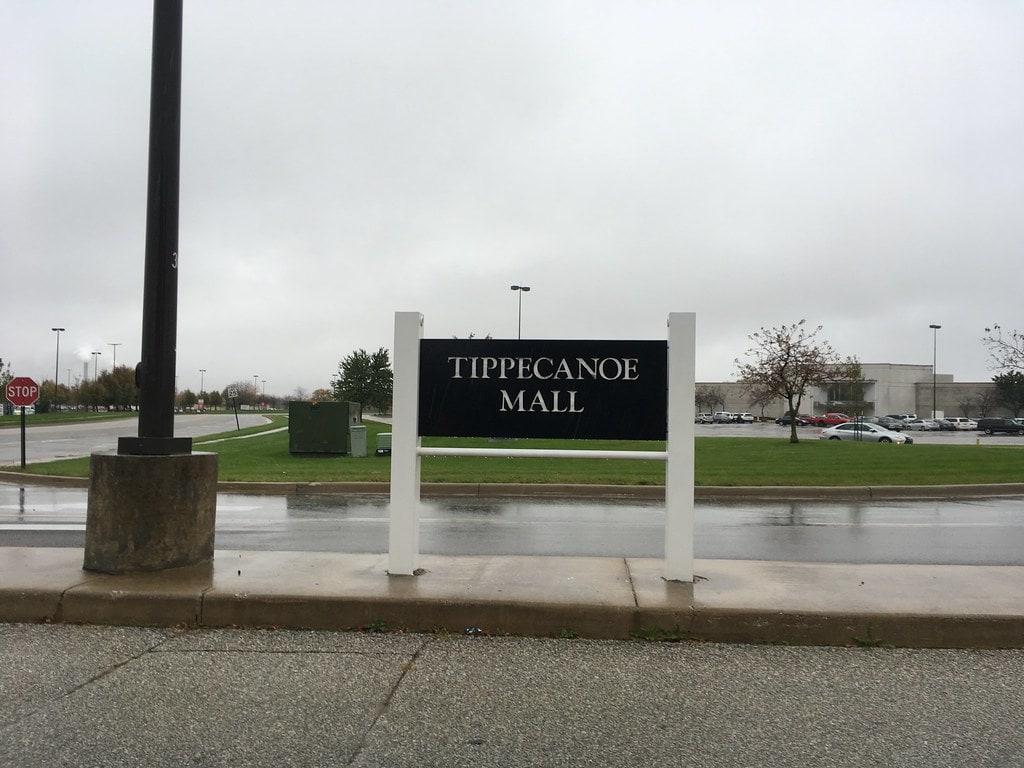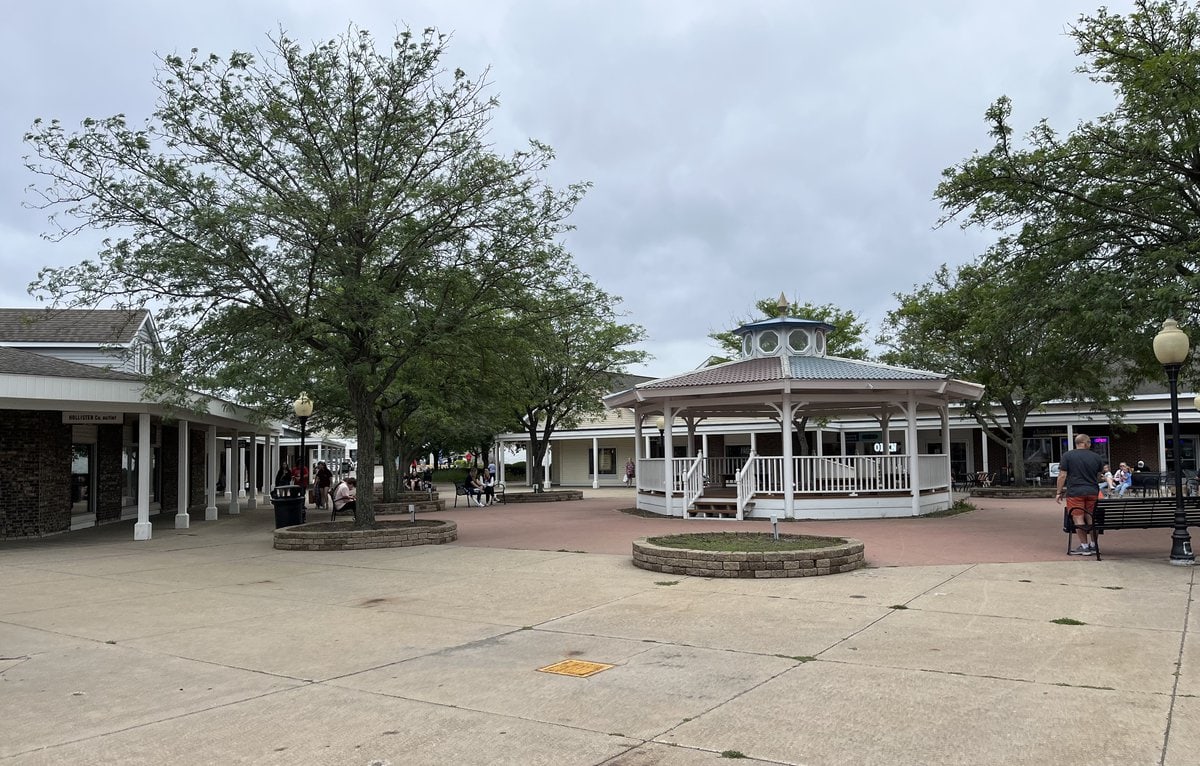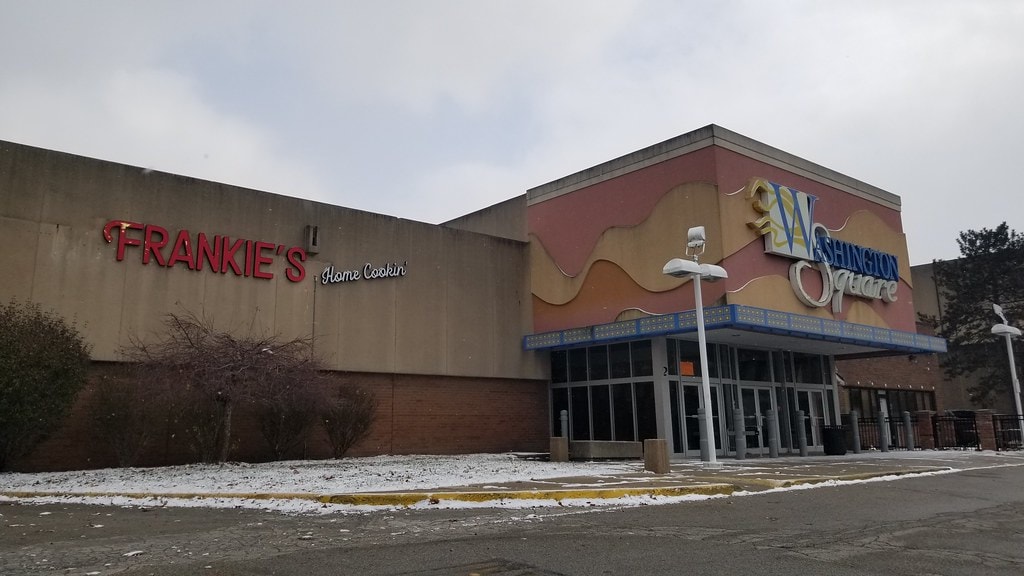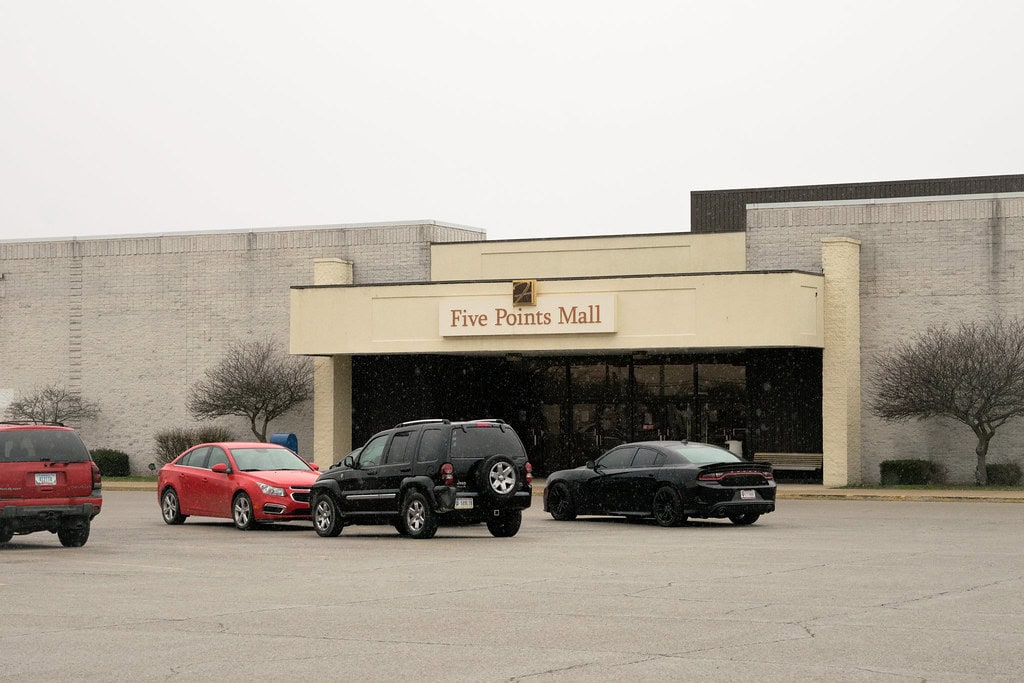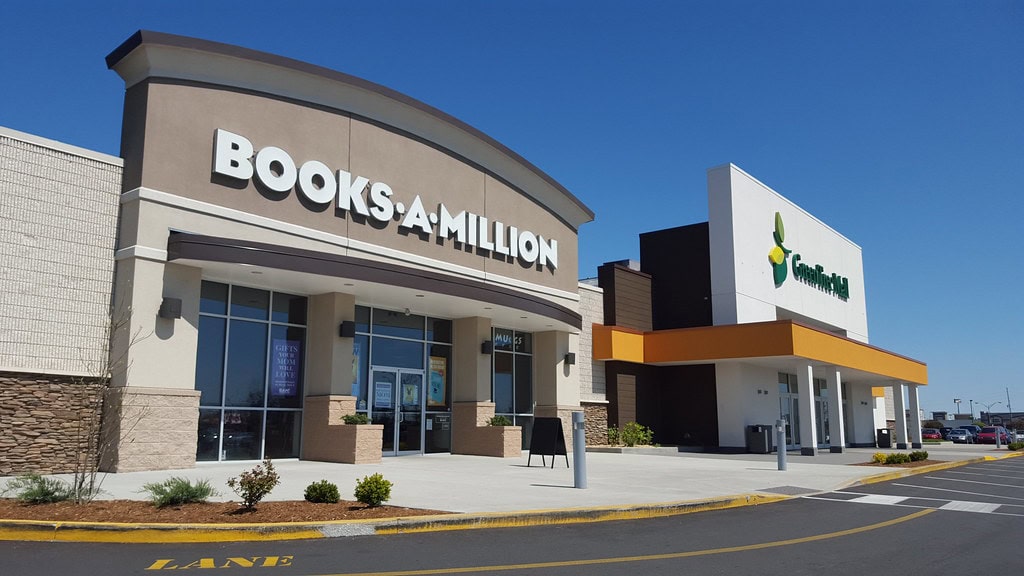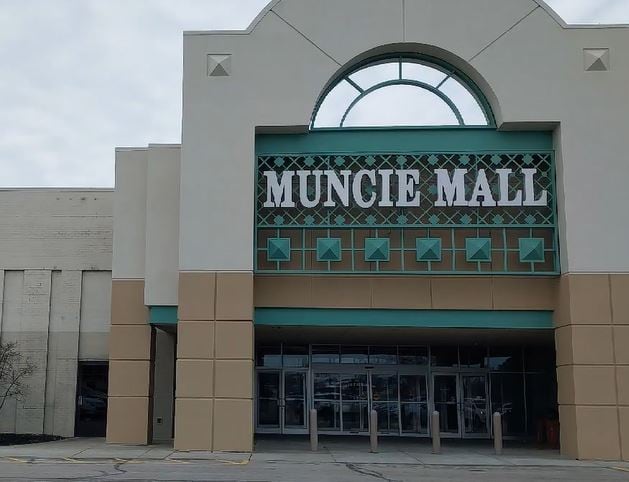Still Holding Time
At the corner of 3rd and Washington, the Bartholomew County Courthouse pulls your eyes upward. Its red brick catches the light unevenly, softened by a hundred and fifty Indiana winters.
The clock tower climbs to 154 feet, six levels up, topped by a bell installed in 1875. Inside, ceilings curve under Second Empire flourishes, trimmed in limestone that's weathered without crumbling.
It took three years to build, from 1871 to 1874, under Isaac Hodgson's plans and McCormack and Sweeny's hands.
At the time, the cost reached $250,000. They called it the finest in the West.
Today, the north lane behind it is closed to store renovation materials, and the celebration planned for its 150th was delayed.
The building still runs, but is not untouched.
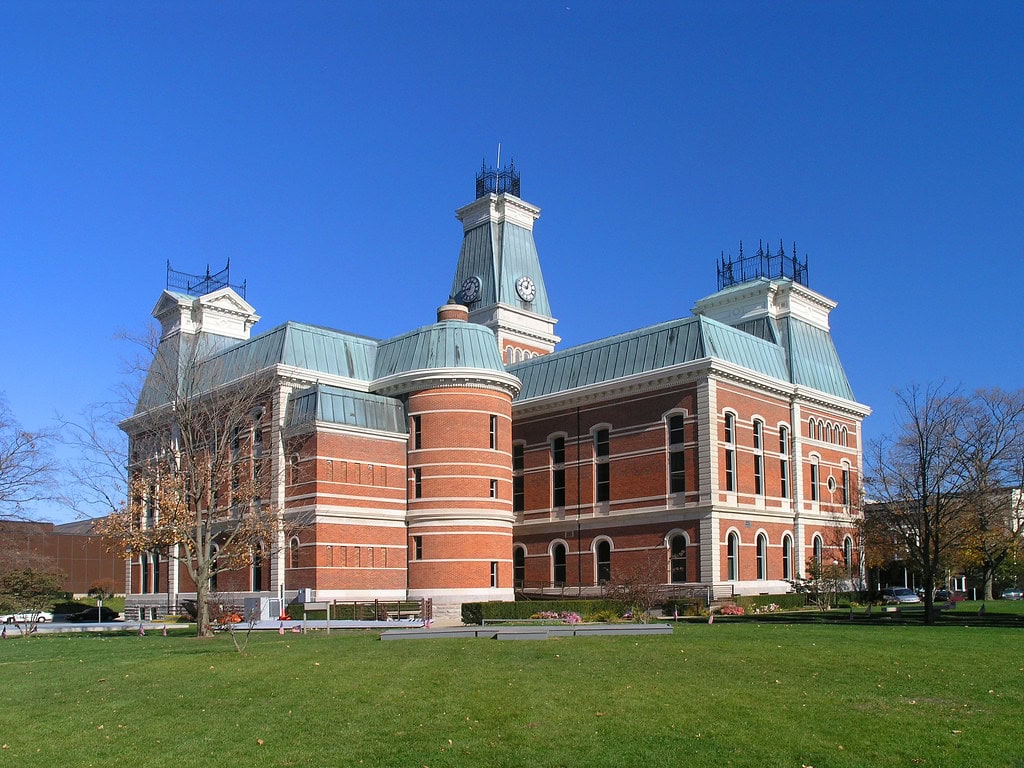
What Came Before the Brick
When Bartholomew County was formed in February 1821, the first courts met in borrowed rooms.
The town still answered to Tiptona then. That name changed to Columbus by March of the same year, but early justice stayed unanchored for a while.
By 1831, the county had its first dedicated courthouse - brick, square, and practical.
It didn't last long. Eight years later, it made way for a second version with cupolas and corners that tried to stretch with the growing population.
That too got overtaken. By the late 1860s, officials described the third courthouse as crumbling, weather-worn, and too small for its purpose.
They'd built fast and cheap back then.
The need for something permanent, something that looked like it belonged in a place with plans, set the next move in motion.
What followed was a request for designs that could withstand the test of time, and at least a few floors higher than the last.
Red Brick, Copper Gutters, and a Tower Clock
Construction on the new courthouse began in 1871. Isaac Hodgson, an Irish-born architect already known across Indiana, had the winning bid.
McCormack and Sweeny got the construction contract.
They broke ground on a red-brick shell that would grow into three floors topped by a mansard roof and capped with a six-level clock tower.
By 1874, it was finished. At $250,000, the cost dwarfed the previous attempts. The 154-foot tower housed a six-inch-thick, ten-ton bell, hung in 1875.
Its original weight-driven clock kept time until 1940, when an electric motor took over, and one of the 900-pound counterweights dropped.
Second Empire styling gave the Bartholomew County Courthouse a formal edge: limestone trim, Corinthian portico, and corner pavilions.
Each of those touches was deliberate, not just ornament, but a choice to say the building belonged in a growing seat of law.
If the earlier versions had settled, this one staked a claim.
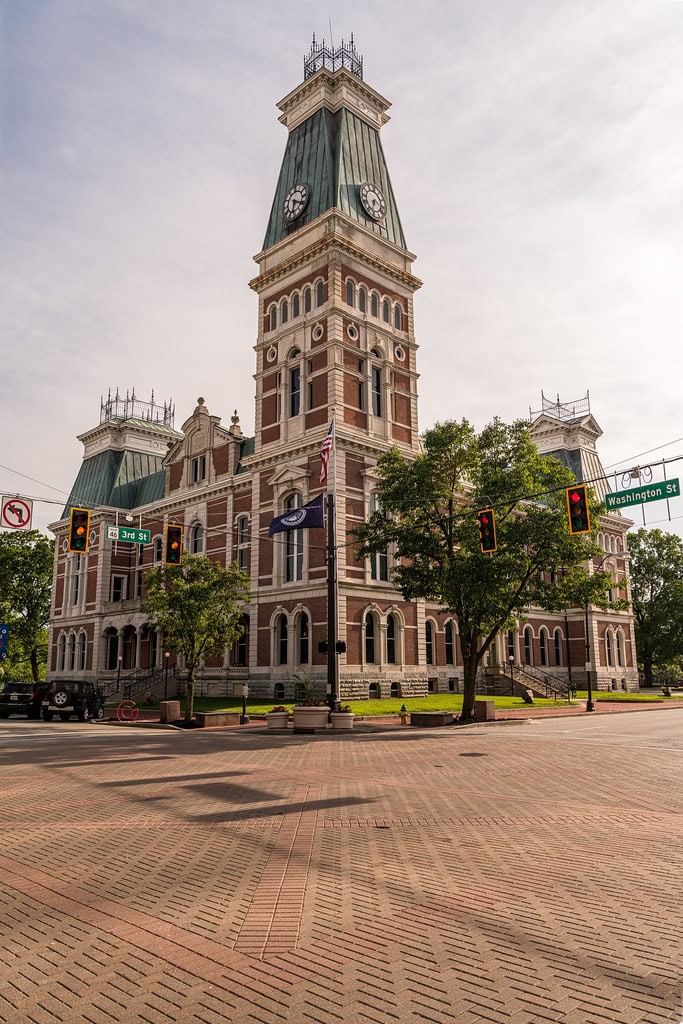
Roof Repairs and Registry Numbers
In 1953, the original slate roof came down.
County workers replaced it with copper sheets, a material choice meant to hold longer under Indiana's freeze-thaw grind.
The interior got its turn in 1968 when modern lighting and new ceiling tiles reworked the halls to match mid-century utility.
Those shifts happened quietly, without ceremony. What came next drew a different kind of attention.
On November 15, 1979, the courthouse earned a listing on the National Register of Historic Places.
It was locked into federal archives as both an individual structure and an anchor to a wider district.
Three years later, in 1982, it was counted as part of the Columbus Historic District - a defined zone covering 574 buildings.
Not everything inside that boundary had held up, but the courthouse still did.
Across the lawn, a granite-and-steel memorial by Charles Rose now sits in view, part of the town's shape but never its center.
Bids, Boilers, and a Chilled-Water Loop
By late 2023, the county pulled the trigger on a major renovation. Dunlap and Company landed the job with a negotiated bid of $3.27 million.
That figure covered boilers, piping, chilled-water loop, LED exterior lighting, and interior ceiling upgrades.
The plan was phased by floor, with judges and clerks relocating temporarily to keep court functions going.
Storage for tools and ducting took over the closed north lane of Jackson Street beginning January 31, 2024.
Some of the funding came from federal ARPA dollars, blended with county general funds and CEDIT reserves.
Workers dealt with older steel piping and debated stainless replacements.
They also planned optional tasks: chandelier work, tile patching, and fresh cabling for future bandwidth needs.
The project ran through spring 2025. While the facade stayed mostly untouched, its guts changed.
The new system should last another 40 years, according to planning documents - or as long as the last one, minus the leaks.
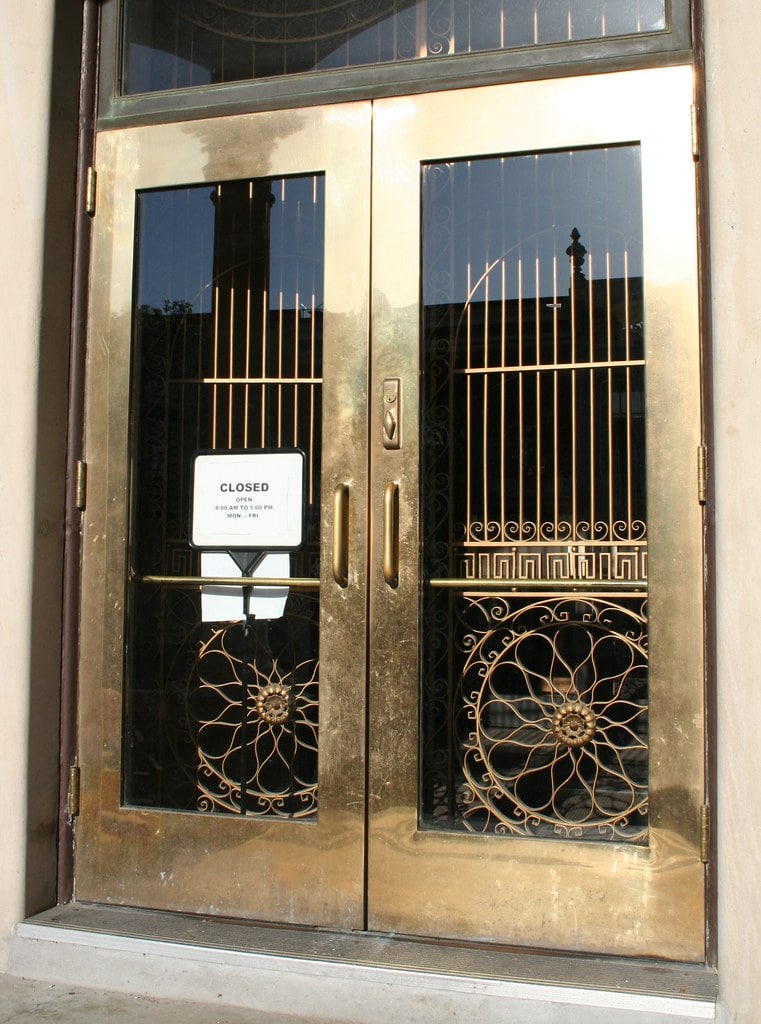
A Missed Anniversary, by Design
The courthouse marked 150 years in 2024, though the banner stayed boxed.
Bartholomew County commissioners postponed the public recognition, citing active construction and safety logistics.
The original plan had leaned toward late fall, but HVAC work stretched into spring.
By early 2025, the project neared closeout, and officials looked at warmer months for rescheduling.
They didn't rush it. After all, the building had waited through far worse than dust and ductwork.
Unlike some commemorations that unfold with speakers and fanfare, this one kept its pace with the renovation.
Plans shifted around when the interior would be camera-ready, not ceremonial.
For a town that once swapped courthouses in less than ten years, the delay wasn't seen as a setback.
One missed date sat quietly in the background, while the crew patched tile and flushed new lines above the courtroom ceiling.
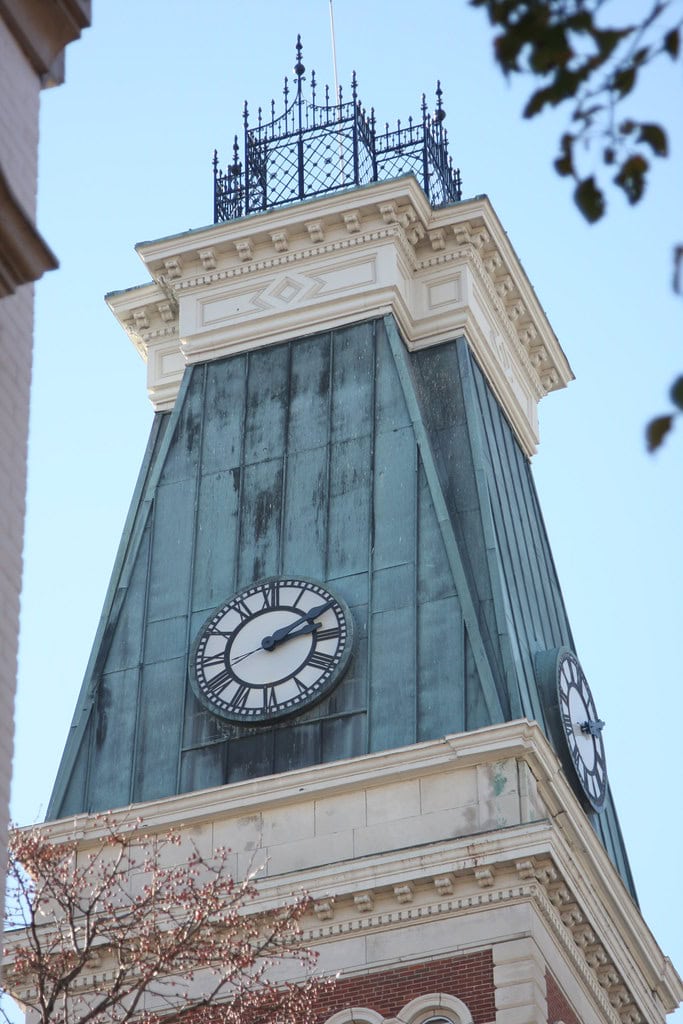
🍀

